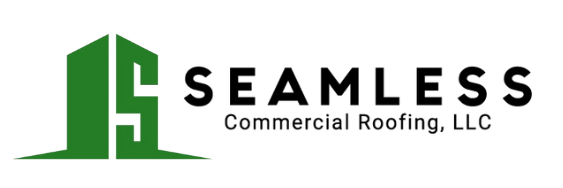Roof Safety Measures
To ensure the safety and success of your roof replacement projects, it is vital to adhere to strict safety measures. From utilizing the right equipment and tools to conducting thorough assessments, effective communication, emergency preparedness, and regular maintenance and inspections, each aspect plays a critical role in protecting both workers and the integrity of your commercial roof.
Proper Equipment and Tools
Utilizing proper equipment and tools is paramount for maintaining safety standards while working on roofs. This includes ladders, safety harnesses, fall protection systems, and appropriate footwear and clothing. Ensuring that your team is equipped with the right gear can significantly reduce the risk of accidents and injuries (HSE Blog).
Roof Condition Assessment
Before initiating any work on your commercial roof, conducting a thorough roof condition assessment is essential. Assessing the roof conditions, evaluating weather patterns, and identifying fragile or unstable surfaces can prevent accidents and ensure that the replacement process is carried out effectively and safely (HSE Blog).
Effective Communication and Teamwork
Effective communication and teamwork are the cornerstone of a successful and safe roof replacement project. Clear and concise communication, appointing a safety monitor, and coordinating tasks and responsibilities are crucial components that contribute to the overall safety of the project. By fostering a culture of collaboration and accountability, potential risks can be minimized.
Emergency Preparedness
Being prepared for emergencies is a significant aspect of ensuring the safety of your team during roof replacement projects. Equipping workers with first aid knowledge and supplies, establishing emergency procedures, and encouraging the reporting of incidents and near-misses can help mitigate risks and promote a culture of safety on-site. This proactive approach enables workers to respond effectively to accidents and emergencies, minimizing the likelihood of injuries (HSE Blog).
Regular Maintenance and Inspections
Consistent maintenance and inspections are vital for the longevity and structural integrity of your commercial roof. Neglecting necessary repairs can lead to increased costs in the long run, as minor issues left unattended can escalate into significant damage that may compromise the safety of the building. Regular inspections help identify potential issues early, allowing for timely repairs and preventing hazardous conditions from developing in your facility (Quality Roofing Solutions).
Remember, prioritizing safety and preventive measures from the outset of your roofing projects can save time, money, and potentially even lives in the long run. By implementing these roof safety measures, you can significantly reduce the likelihood of accidents, ensure the successful completion of projects, and maintain the structural integrity of your commercial roof.
Common Roof Replacement Mistakes
When undergoing a commercial roof replacement project, it’s imperative to steer clear of common pitfalls to ensure cost-effective, durable, and compliant roofing solutions. By avoiding these errors, you can safeguard your investment and enhance the longevity of your commercial roof.
Reusing Old Flashing
Reusing old flashing during roof replacement can compromise the roof’s water protection and structural integrity. This practice may lead to potential leaks and damage, reducing the effectiveness and longevity of the newly installed roof.
Incorrect Nail Placement
Ensuring correct nail placement is vital for the success of a roof replacement project. Incorrect shingle nail positioning can result in corrosion, structural weaknesses, and water intrusion. Properly positioned nails underneath shingle layers are crucial for secure shingle attachment and overall roof durability.
Poor Attic Ventilation
Proper attic ventilation plays a significant role in the longevity and performance of a new roof. Inadequate attic ventilation can lead to damages and a shorter lifespan for the roofing system. It may cause premature failure of shingles and roof decking, emphasizing the importance of maintaining proper ventilation.
Neglecting Starter Strips
Neglecting to use starter strips at the overhangs on the roof is a critical mistake to avoid during replacement. The absence of starter strips can enable water infiltration onto the roof deck, resulting in water damage and compromising the structural integrity of the entire roofing system.
Impact of Roof Pitch on Lifespan
The roof pitch significantly influences the lifespan of a commercial roof. Roofs with higher pitches have a longer lifespan as they effectively deflect heavy rains and hail. Conversely, flat or low-sloped roofs are more prone to deterioration due to water pooling and slower water runoff, leading to quicker roof aging and potential issues.
By understanding and actively avoiding these common roof replacement mistakes, you can ensure the success and longevity of your commercial roofing project. Remember to prioritize proper installation techniques, regular maintenance, and adherence to industry standards to protect your investment and maintain a secure and durable roofing system.

